Experiments with Madrone Bark Tea
October 18, 2009 | Updated October 27, 2020
As an Amazon Associate I earn from qualifying purchases.
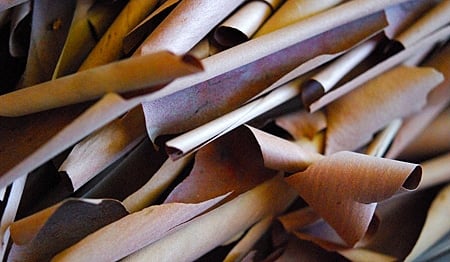
Not much about cooking excites me more than experimenting with a new ingredient. I get especially jazzed when that ingredient is not only new to me, but new to the rest of the culinary world as well. It’s a rush, that feeling — real or imagined — that I am adding something new to our collective knowledge of food, rather than rehashing the genius of those who went before me.
Madrone bark has been one of the best of these experiences.
What is it? Madrone, or madrona, is a tree that is native to California’s Central Coast and Sierra Foothills. It is a long-lived, evergreen cousin of manzanita, and its bark bursts into cinnamon-like curls every summer. The Indians who first lived here gathered madrone bark to make a tea they used topically to treat sores, and internally to cure a sore throat.
The taste of madrone bark tea is like a combination of cinnamon, mushrooms, wood, tannin and something else I find hard to pinpoint; a zephyr of fruitiness is the best I can come up with.
Almost no one now uses madrone bark. I know of only a few other cooks working with it, notably Ron Zimmerman of the Herbfarm restaurant outside Seattle; Zimmerman is, more than any other chef I know, a man after my own heart.
His work focuses on creative use of plants, both wild and domestic, and he posseses the creativity of a Grant Achatz without leaving the soil that surrounds his restaurant. Zimmerman uses madrone bark tea to flavor risotto and as an ingredient in ice cream. He probably has other uses, but those are what I am aware of.
Fortunately Holly’s mother Ruth has a mature madrone tree in her yard in Nevada County, so I have a ready supply to play with. What I quickly learned is that the trick with madrone is to highlight its subtle flavor without knocking your guests over with woody tannins.
Madrone bark tea gets dark in a hurry, too. With a concentration of about 20 bark curls to 2 quarts of water, the tea rapidly turns a rich red mahogany, a little like South African red tea. With that in mind, I thought it might be fun to make my first-ever Chinese tea egg with not with tea, but with madrone.

What’s a tea egg? It’s a cool Chinese snack. You boil eggs, then crack the shells all over, then simmer the eggs for several hours in a combination of tea, soy sauce, star anise and lemon rind. I wanted to do a Western interpretation of the eggs with madrone, so I used the bark tea, bay leaves, a star anise, lemon rind, juniper berries and salt.
I also used duck eggs, given to me by my friend Josh, who has a trio of ducks wandering around his back yard. This turned out to be a mistake, because duck eggs, I later realized, have a much thicker inner membrane than chicken eggs — meaning that cracking the shell doesn’t also break that membrane. Flavor still seeps in, so the eggs tasted great, but “The Reveal” in a tea egg is that beautiful latticework design on the egg itself; it looks like a spiderweb.
I cheated on these eggs, picking off the shell but leaving the membrane on for the photo. If you use a chicken egg it should look like the picture. Aren’t they gorgeous? And they taste warm and deep, rich, slightly tannic — this is a hard-boiled egg you want to linger over.
There was a reason I wanted to use duck eggs for this recipe. I knew you can reuse the madrone bark tea infusion you cook the eggs in, so I added another two tablespoons of salt and used it to brine one of the mallards I’d shot in Canada. Now normally I don’t brine my ducks, but these Canadian ducks had very little fat on them (my friend Kevin Kossowan laments this often; he lives near Calgary), so I needed to add as much moisture as I could.
I wanted to serve them both on the same plate, so it’d be duck eggs with duck meat. And just to push Iron Chef Madrone & Duck even further, I decided to tie everything together with a farrotto — farro, a primitive wheat related to spelt, cooked like a risotto — made with morel mushrooms, shallots, madrone bark tea and duck fat. Click here for the full farrotto recipe.
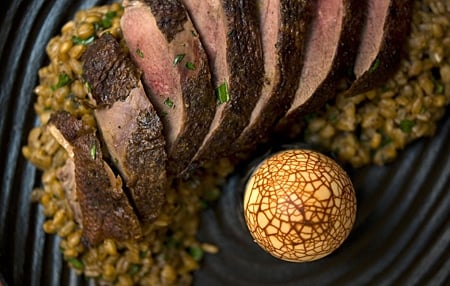
This dish is concentrated wild. It feels, smells and tastes like the deepest woods — almost murky. Only a last-minute squirt of lemon juice allowed some light to shine through a canopy of dark, warm flavors that feels like a flannel comforter in a snowstorm. This is an awesome dish for a cold evening.
As good as it was, I’m not done with my madrone experiments. I want to concentrate the flavor more next time — bring it right to the edge of the tannic wall that would make it inedible — and see what I can do with it then.
Other possibilities abound. Maybe grind it to a powder and use it as a flavoring in sausage or salami? Grind it with coarse salt to make a finishing salt for venison or beef? And what about sweet dishes, like Zimmerman’s ice cream? Madrone sugar, anyone?
I can’t wait to play with this some more, but I’m wondering if I am alone out there. Have any of you ever worked with madrone? What about other tree barks?
Madrone Bark Tea Eggs
Ingredients
- 1 dozen eggs
- 6 cups madrone tea, (see below)
- 2 bay leaves
- 1 star anise
- zest of a lemon
- 10 crushed juniper berries
- 3 tablespoons kosher salt
Instructions
- To make the madrone bark tea, bring 6-7 cups of water to a boil, then add 15-25 madrone bark curls. Cover and turn off the heat. Let steep overnight. This tea lasts a long time in the fridge, so you can make it ahead of time.
- Boil the eggs in plain water to start. Put the eggs in a pot, cover with cool water and bring to a boil. Turn the heat down and simmer for 2-3 minutes, then turn off the heat. When the water is cool enough to touch, pull the eggs out and submerge in cold water.
- Meanwhile add all the remaining ingredients into a large pot and bring to a simmer.
- Take each egg and crack the shell gently all around the egg. You want it to stay intact, but be covered in tiny cracks.
- Place the eggs in the madrone tea and simmer for 2-3 hours. Turn off the heat, cover and steep overnight. Eat cold or at room temperature.
Nutrition information is automatically calculated, so should only be used as an approximation.

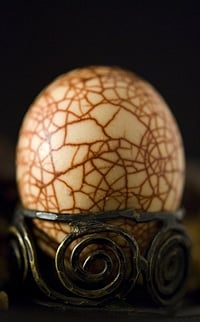
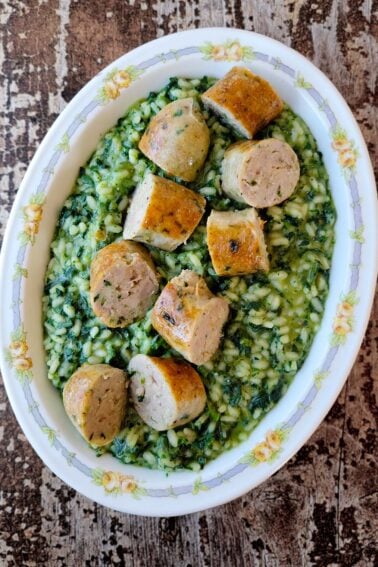
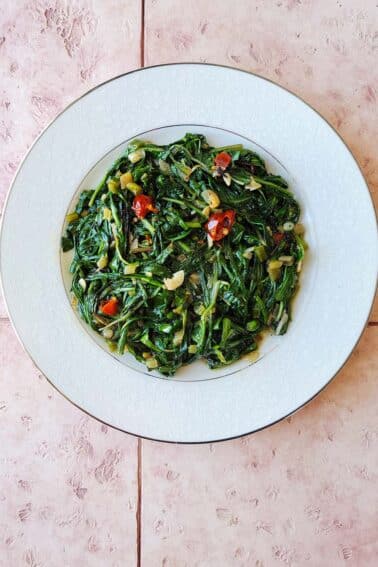
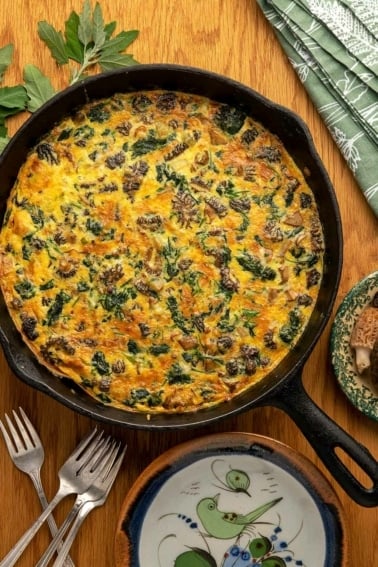
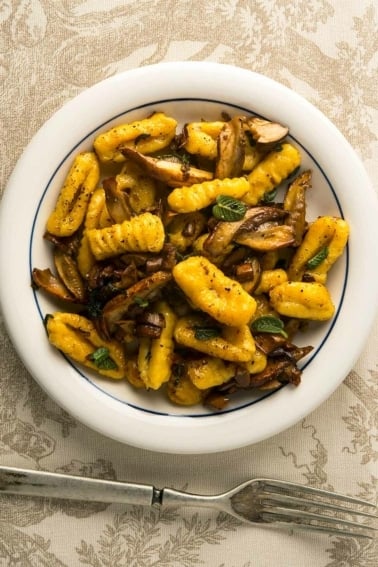
I live in Gig Harbor, WA and my yard is full of madrone trees. I want to suggest how to harvest the bark more efficiently than peeling off each curl with your fingers. Get an empty milk jug and cut the top front of the jug off leaving the handle and about 4″ of the bottom( to contain the curls) then rub the jug up the tree and it will slice off and collect the papery bark in the bottom of the jug.
Gourmet Seattle restaurants have started serving Madrone bark tea for it’s delightful cinnamon-fruity flavor and are even starting to incorporate it into marinades and other recipes! I love it. The madrone tree BERRIES are good to eat also when they turn red and fall from the tree.
Aintitfunny: That’s a great idea, thanks!
I have had Madrone bark tea many times. Thanks to the Zimmer-man for that. But, not recently. Tonight… I opened a 2012 Cahors and I thought… wow, Madrone bark. All the way. Weird.
Thank you for this delicious and truly novel recipe. We make tea with our madrona bark and I hear your regarding the mystery flavor, it’s eluded me for years. I have a terrible nose. Aside from being difficult to characterize, if the preparation isn’t extracted enough it doesn’t present; if it’s over-extracted the tannins dominate. I think I’ve settled on terpene. Thoughts?
To more efficiently gather the bark, take an empty gallon milk jug and partially cut the side opposite the jug handle away so that you leave a bucket which you can press up against the tree trunk and slide upwards to peel off the loose papery bark and it will drop into the milk jug, allowing you to quickly gather great quantities of bark in a short time!
Don’t forget to watch for and gather the madrone berries when they ripen and fall. They are also edible and you can make jam of them I have heard, but have not myself tried. I have many madrone trees in my yard.
Madrone bark tea makes a great hot OR cold drink, just do not steep too long or use too much bark to too little water if you do not want too strong a taste. It tastes best as a cinnamon-fruity hot tea or cold drink with ice.
Try some madrone bark JELLO!
Just add madrone bark tea to some knox gelatine and add honey or sugar.’
ALSO try cold madrone bark tea with or without sweetener as a mixer for alcoholic drinks!
Soak madrone bark in vodka to make a NEW flavored vodka!
Have you tried madrone bark in barbecue, like in a dry rub? I’ve been thinking about mixing some manzanita sugar and madrone bark into a rub.
I ate at the Herbfarm and had the Madrona bark tea after dinner. I am now obessed with getting more of the yummy tea! If someone has madrona bark trees in their house and is willing to mail me some of the batk, please email me so we can talk! Jennior@netscape.net
I have hundreds of madrone trees growing on our 20 acres. I watch the seasons change the trees, producing flowers, berries, peeling of the bark but never knew they have medicinal qualities to them, and I grew up in the Pacific Northwest (Oregon). I’m wondering – is there a market for the leaves, bark and berries? I’m always looking for a way to start up a small business – this would be awesome because the trees grow like weeds here.
Hi Jamie – Let’s find a way to get in touch. I’m in the bay area and trying to procure bark but haven’t been able to find anything online quite yet.
Thanks and best,
Jared
I purchased a jar of cucumber pickles at a Russian grocery once. The label said they were from Poland. They were so delicious and subtle compared to American store brands. To my surprise they had a small oak leaf in the jar. I duplicated this idea making home canned dill pickles with young oak leaves instead of grape leaves for crunchiness. (I soaked the leaves first to make them less tannic)The results were excellent! Maybe the Madrone bark could be used in a sweet or sour pickle recipe?
Hey, I have just ID two trees on the block of the house I am living in on the East Coast of Australia (in Coffs Harbour) – they are Madrone Trees!! These trees have intrigued me since living here and having learned of magical qualities I am excited! As an amateur ‘chef’ (read pretty reasonable cook) I love experimenting with foods and my personal passion is using various Herbs and Spices to enhance foods. I further that with them marrying dishes created to great wines of the world! So now I begin this new journey of utilizing that which I have in abundance, Madrone bark.
Let the fun begin … 🙂
Every spring we dye our eggs with onion skins. I start out the water with onion skins and boil till done, crack the shells and cook a little longer and you get the same effect. It’s so cool!
I followed this recipe using madrone bark from the Collins Lake area. It does require a bit of patience, and the result was a new culinary adventure. Overall, it is more of a visual than a culinary treat. The finished eggs were slightly briney with subtle anise flavor and a bit of a woodsy taste (like after a rainfall). About half liked the eggs and and the others were indifferent. Don’t know if it was the freshness of the eggs, or what, but to peel them with the membrane intact (to get a dark netting) requires deft fingers and a pair of tweezers; otherwise the mottling is very light colored when the membrane gets removed with the shell. Do not expect a soft texture from this egg that is cooked for 2 hours–it will bounce like a basket ball.
Hullo-these look gorgeous!
I live in Minneapolis and I am looking for Madrone bark tea. Can you help me discover how I might get hold of some?
Thank you!